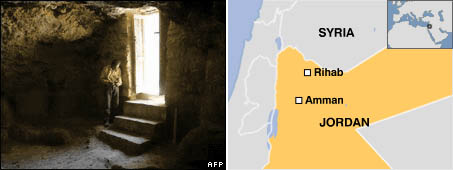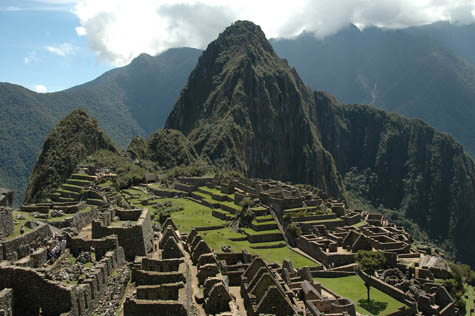 [Image: The world's oldest Christian church? A cave in Jordan, via the BBC].
[Image: The world's oldest Christian church? A cave in Jordan, via the BBC].Some archaeology for a Tuesday evening:
1) Is a cave in Jordan the world's oldest Christian church? "The cave is beneath the ancient church of St Georgeous, itself one of the oldest known places of worship in the world," the BBC reports. "According to Dr. Abdul Qader Al-Hassan, the director of the Rihab Centre for Archaeological Studies, the cave site shows clear evidence of early Christian rituals that predate the church." This subterranean place of worship has been tentatively dated at 70 A.D.
 [Image: The re-discovery of Egypt's missing pyramid, photographed by Amr Dalsh of Reuters and Nasser Nasser of the Associated Press].
[Image: The re-discovery of Egypt's missing pyramid, photographed by Amr Dalsh of Reuters and Nasser Nasser of the Associated Press].2) This is the same week, of course, that a "lost" pyramid was re-discovered in Egypt – re-discovered, because it had previously been lost.. and discovered... only to be lost... and re-discovered.
According to CNN, "the pyramid, of which only the base remains, is believed to be that of King Menkauhor, an obscure pharaoh who ruled for only eight years more than 4,000 years ago." It seems to have been first dug up in the 1840s by a German archaeologist – only to disappear again beneath the desert sands.
 [Image: Macchu Picchu photographed by Flickr-user Eric in SF].
[Image: Macchu Picchu photographed by Flickr-user Eric in SF].3) Another German archaeologist was recently in the news, however: Augusto R. Berns, who "discovered" Macchu Picchu back in 1867, a good four decades earlier than anyone thought, only to "ransack" the place.
From the Telegraph:
- In a letter [Berns] boasts of finding "significant rustic buildings and underground structures that have been closed with stones," believed to be the first written description of Machu Picchu.
These, he speculates, would "undoubtedly contain objects of great value and prove part of the treasure of the Incas."
In the same document, he claims that he has the backing of the "Supreme government" to access and sell the treasures.
4) And while this last bit is neither news nor to be believed, I find it interesting nonetheless. Is there a "subterranean city located beneath the former Inca capital of Cuzco"?
- In 1952, a mixed group of twelve French and American explorers managed to gain access [to this underground city] with enough provisions to last for five days as they embarked upon what they termed “the greatest discovery since Machu Picchu.”
The team ventured into the [tunnels] and nothing further was heard from them until fifteen days later, when French explorer Phillipe Lamontierre emerged from the hole suffering from acute dementia, with visible signs of malnourishment and even the bubonic plague... The broken survivor indicated that his fellow adventurers had died, and some of them had even fallen down unfathomed abysses. Among the objects he brought back was an ear of corn made of solid gold, which was later entrusted to the Cuzco Museum of Archaeology.
You're on a road crew, blasting through the mountains outside Quito, deep in the compression and strain of old bedrock, with incomprehensible stratigraphies arching with strike and dip all around you... when you scrape away some rock and find a serial number.
The mountains were manufactured.
There's even a number you can call for customer complaints.
No comments:
Post a Comment